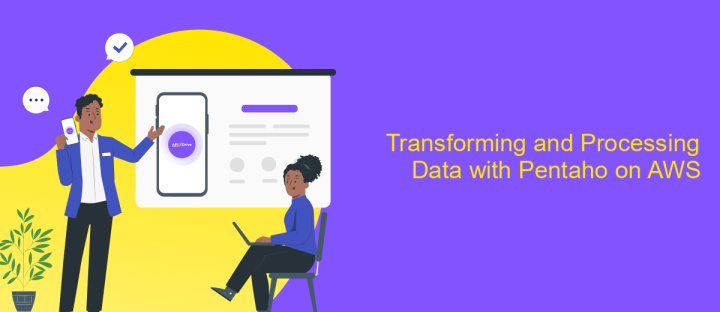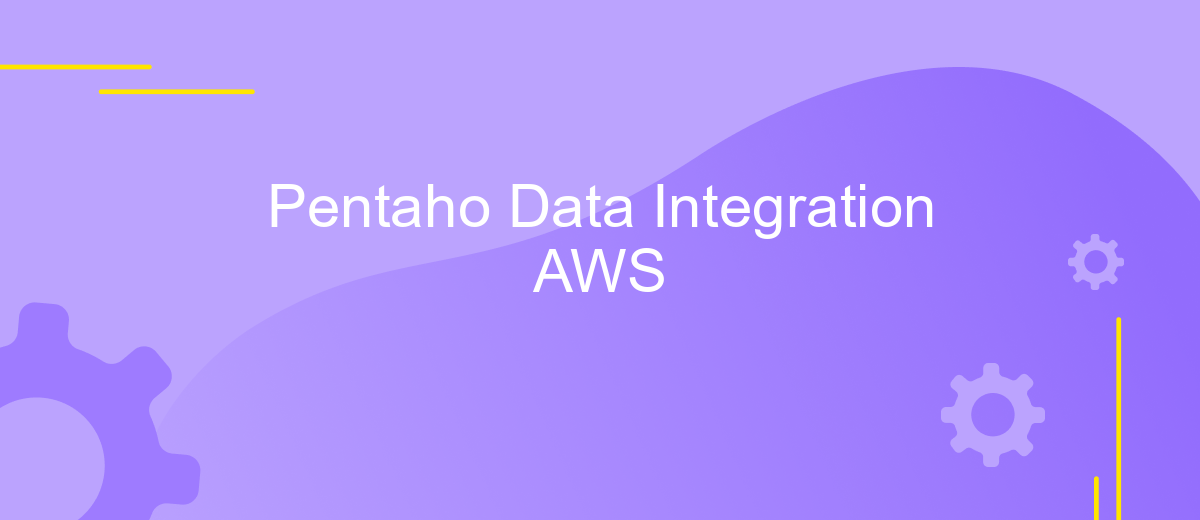Pentaho Data Integration AWS
Pentaho Data Integration (PDI) on AWS offers a robust solution for businesses looking to streamline their data processing and analytics in the cloud. By leveraging the scalability and flexibility of Amazon Web Services, PDI enables organizations to efficiently manage, integrate, and analyze vast amounts of data. This article explores the benefits, setup process, and best practices for deploying Pentaho Data Integration on AWS, empowering businesses to drive data-driven decisions.
Introduction to Pentaho Data Integration and AWS Integration
Pentaho Data Integration (PDI), commonly known as Kettle, is an open-source tool that simplifies the process of data integration. It is designed to handle data from various sources, transform it, and prepare it for analysis. PDI offers a user-friendly interface and a wide range of functionalities, making it an essential tool for businesses aiming to harness the power of their data.
- Seamless data transformation capabilities
- Support for a wide variety of data sources
- Intuitive graphical user interface
- Scalability to handle large datasets
- Extensive community support and documentation
Integrating Pentaho Data Integration with Amazon Web Services (AWS) enhances its capabilities by leveraging AWS's robust cloud infrastructure. This integration allows organizations to efficiently manage and process large volumes of data in the cloud, ensuring scalability and reliability. AWS provides a suite of services that complement PDI's functionalities, enabling businesses to optimize their data workflows and gain valuable insights. By combining the strengths of PDI and AWS, companies can achieve a more agile and cost-effective data management strategy.
Setting up Your AWS Environment for Pentaho

To begin setting up your AWS environment for Pentaho Data Integration, start by creating an AWS account if you haven't already. Once your account is set up, navigate to the AWS Management Console. Here, you will need to create an S3 bucket to store your data and any related files. Ensure that your bucket has the necessary permissions to allow Pentaho access. Next, set up an Amazon RDS instance for your database needs. Choose the appropriate database engine and configure the instance according to your processing requirements.
After your storage and database are configured, consider integrating with ApiX-Drive to streamline data flow between AWS and Pentaho. ApiX-Drive can automate data transfers, reducing manual workload and improving efficiency. Set up IAM roles and policies to manage permissions securely, ensuring that only authorized users and services have access to your resources. Finally, download and install Pentaho Data Integration on your EC2 instance, configuring it to connect with your newly established AWS resources. This setup will provide a robust environment for effective data integration and processing.
Connecting Pentaho to AWS Data Sources

Integrating Pentaho Data Integration (PDI) with AWS data sources allows for seamless data processing and transformation within a cloud environment. To effectively connect Pentaho to AWS, you need to configure access to various AWS services, such as S3, RDS, and Redshift. This integration facilitates efficient data flow management and analytics, leveraging the scalability and reliability of AWS infrastructure.
- Install the necessary JDBC drivers for AWS databases like RDS or Redshift in the Pentaho environment.
- Configure AWS access credentials using IAM roles or access keys to ensure secure connectivity.
- Set up AWS S3 connections in Pentaho by specifying the bucket name and required permissions.
- Utilize Pentaho's native connectors for seamless interaction with AWS services, ensuring optimal performance.
By following these steps, you can efficiently connect Pentaho Data Integration to AWS data sources, enabling robust data management and analysis. This setup not only enhances data accessibility but also ensures that your data processing workflows are integrated within the AWS ecosystem, providing a comprehensive solution for data-driven decision-making.
Transforming and Processing Data with Pentaho on AWS

Pentaho Data Integration (PDI), when utilized on AWS, offers a robust solution for transforming and processing data efficiently. By leveraging AWS's scalable infrastructure, PDI can handle vast amounts of data, ensuring seamless integration and transformation processes. This combination allows organizations to streamline their data workflows and extract valuable insights.
One of the key advantages of using Pentaho on AWS is its ability to connect to various data sources, both on-premises and cloud-based. This flexibility ensures that data from disparate systems can be unified, transformed, and processed in a centralized manner. PDI's intuitive interface and rich library of transformation tools make it easy to design complex data workflows without extensive coding.
- Scalable data processing with AWS infrastructure.
- Seamless integration with multiple data sources.
- Intuitive design interface for data workflows.
- Comprehensive library of transformation tools.
By deploying Pentaho Data Integration on AWS, businesses can achieve greater agility in their data operations. The combination of PDI's powerful data transformation capabilities and AWS's reliable cloud services enables organizations to optimize their data processing tasks, leading to faster decision-making and enhanced business intelligence.
- Automate the work of an online store or landing
- Empower through integration
- Don't spend money on programmers and integrators
- Save time by automating routine tasks
Deploying and Managing Pentaho Data Integration Pipelines on AWS
Deploying Pentaho Data Integration (PDI) pipelines on AWS involves leveraging Amazon's robust cloud infrastructure to enhance data processing capabilities. To begin, you need to configure an AWS environment that supports PDI, which includes setting up an EC2 instance for hosting the Pentaho server and S3 buckets for data storage. Utilize AWS IAM roles to ensure secure access and permissions management. Additionally, integrating with AWS Glue can streamline the ETL processes, allowing for seamless data transformation and loading. By deploying on AWS, you gain scalability and flexibility, enabling efficient handling of large datasets.
Managing PDI pipelines on AWS requires a comprehensive approach to monitoring and optimization. Tools like CloudWatch can be employed to track performance metrics and set alerts for any anomalies. For enhanced integration management, consider using ApiX-Drive, which can automate data flows between PDI and various AWS services. This integration facilitates real-time data updates and reduces manual intervention. Regularly review and update your pipeline configurations to align with evolving data requirements and leverage AWS's auto-scaling features to dynamically adjust resources based on workload demands.
FAQ
What is Pentaho Data Integration (PDI) and how does it work on AWS?
How can I automate data integration tasks with Pentaho on AWS?
What are the best practices for optimizing Pentaho Data Integration performance on AWS?
How can I ensure data security when using Pentaho Data Integration on AWS?
Can I integrate Pentaho Data Integration with other AWS services?
Apix-Drive is a universal tool that will quickly streamline any workflow, freeing you from routine and possible financial losses. Try ApiX-Drive in action and see how useful it is for you personally. In the meantime, when you are setting up connections between systems, think about where you are investing your free time, because now you will have much more of it.


